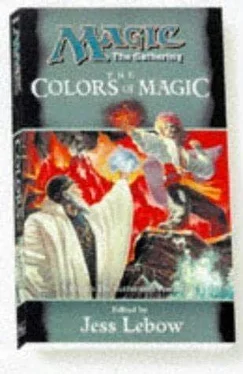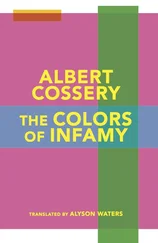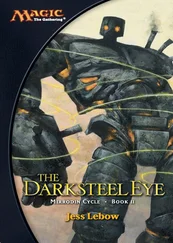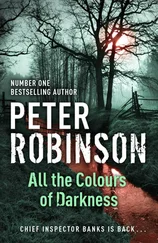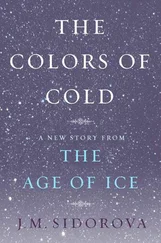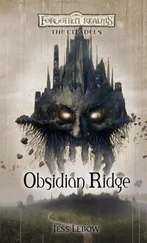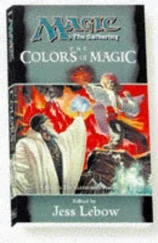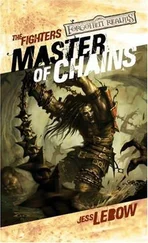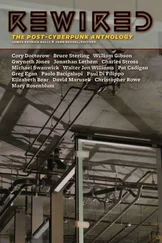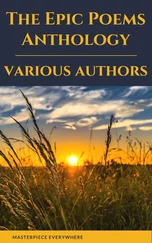Jess Lebow - The Colors of Magic Anthology
Здесь есть возможность читать онлайн «Jess Lebow - The Colors of Magic Anthology» весь текст электронной книги совершенно бесплатно (целиком полную версию без сокращений). В некоторых случаях можно слушать аудио, скачать через торрент в формате fb2 и присутствует краткое содержание. Жанр: Фэнтези, на английском языке. Описание произведения, (предисловие) а так же отзывы посетителей доступны на портале библиотеки ЛибКат.
- Название:The Colors of Magic Anthology
- Автор:
- Жанр:
- Год:неизвестен
- ISBN:нет данных
- Рейтинг книги:3 / 5. Голосов: 1
-
Избранное:Добавить в избранное
- Отзывы:
-
Ваша оценка:
- 60
- 1
- 2
- 3
- 4
- 5
The Colors of Magic Anthology: краткое содержание, описание и аннотация
Предлагаем к чтению аннотацию, описание, краткое содержание или предисловие (зависит от того, что написал сам автор книги «The Colors of Magic Anthology»). Если вы не нашли необходимую информацию о книге — напишите в комментариях, мы постараемся отыскать её.
The Colors of Magic Anthology — читать онлайн бесплатно полную книгу (весь текст) целиком
Ниже представлен текст книги, разбитый по страницам. Система сохранения места последней прочитанной страницы, позволяет с удобством читать онлайн бесплатно книгу «The Colors of Magic Anthology», без необходимости каждый раз заново искать на чём Вы остановились. Поставьте закладку, и сможете в любой момент перейти на страницу, на которой закончили чтение.
Интервал:
Закладка:
[Ar-basinno's note: From this fairly confused passage, we can infer that the ritual slaying of the Fizzer was followed by an orgy, involving all the participants in the ceremony.]
[Note in margin: Of course. All of Ar-basinno's theories involve orgies sooner or later. L. B.]
We had ta name our teem an we coodnt think a somtin til somebody, I tink it wuz Fizzers cozin Farf who wuz throwin da bomb most, sed we should pack beatle bugs fer lunch nex time cuz he wuz hungry.
[Ar-basinno's note: Again the reference to increasing the number of "bugs, " i. e., followers necessary for the ceremony.]
So we callin ourselfs da Packers.
[Ar-basinno's note: It seems clear that this religious cult split into several competing factions, which evidently led to religious wars. This probably explains why this cult was eventually wiped out and has left only faint traces in goblin culture today. From the extent of the destruction in the cult, we are safe in inferring a series of increasingly severe religious wars and crusades carried out by the "Raiders" and "Packers" upon one another, resulting in their mutual extinction. I propose to deal much more extensively with this issue in my forthcoming book, The Shattered World: An Investigation of the Goblin Religious Wars and the Collapse of the Cult of Squee.]
[Note in margin: The gods preserve us, he proposes to write another sleep-producer. L. B.]
Anyway da game is fun an now we play it all da time cept peeple don lik getting hit wit clubs, so we had ta tell everybody no more of dat, jus grab da guy wit dat bomb an push him down. Also wes runnin out of goblin bombs an people don like throwin dem so much cuz if dey drop em dey get blooed up. So maybe well uze somfin else. Like a ball. We wuz tryin ta cide what ta call da game. Somebody sed we should call it Ball kickin wit Feet, but we all laffed. Den I sed we should call it affer food, cuz it makes us feel like eatin after. So we dacided ta call it Cricket.
So concludes this remarkable document, the most detailed and persuasive evidence for my theory of the cult of Squee yet adduced. The author of the document even gives a name to this important cult: Cricket. I take considerable pride in presenting this evidence to refute the ignorant attempts by certain of my colleagues at the Argivian University to dismiss my research and request that the regents of the university take it into consideration when discussing my application for future resources to continue to investigate the exciting and intriguing pathways opened up by this find.
Note appended to the above:
To the Regents and Masters of the Argivian University, from Lavino Bar-bassanti, late of the university.
As you can plainly deduce from the above document, old Ar-basinno has gone completely around the bend. His "theory" of a goblin religious cult of Squee, which he began developing twenty years ago, has been preying on his brain, and now he's taken it to new heights of lunacy.
As I mentioned above in a marginal note, I was with Ar-basinno when he investigated the ruins at The Flarg. Since he was drunk most of the time, there was little he saw and less he remembered. He's right about the field, though: Sarapinna and I found it more or less the way he describes. It was striking only in that whereas the rest of the settlement had fallen into ruins after the human raids that laid waste to the area, the broad field was actually well-preserved. I don't deny that it was a place of importance to the goblins, but Ar-basinno's idea of religious rituals has no evidence for it at all.
I told him as much at the time, but he wasn't inclined to listen, and I felt it was best to keep quiet and hope the whole thing would blow over. We found the spheroid objects, wineskins, and whistle exactly as he says. The garments were in pretty bad shape, but I could make out the word "Raiders" on one and "Packers" on the other. On each side of the field were places where there had been some sort of arrangement of benches. Ar-basinno is right in saying that whatever was going on there was seen by a gathering of goblins.
At one end of the field was a large rock, on which, at some time in the past, someone had chisled some numbers and words. It was hard to make everything out, but there was something about "downs. " However, we were unable to decipher the word's direct translational meaning.
Personally, I believed the whole discovery was far less significant than Ar-basinno wanted to make out. Back in our tent, he kept babbling on about the "most significant archaeological find of the century" and the "physical foundation of the science of goblinology" until I had to hit him over the head with a flagon of wine to shut him up. The next morning when he came to, the idea of a religious cult was firmly ensconced in his mind, and nothing I said could dislodge it.
We argued about it almost the entire way back to Argivia, and shortly after, as many of you are aware, I departed from the university rather than suffer through further association with him.
I strongly urge you to ignore this whole affair and offer Ar-basinno the prospect of a quiet retirement to some obscure location within the university. Whatever went on at The Flarg on that field, I doubt it had any lasting significance for goblin culture. At best it was some sort of ritual-certainly not religious-that was brief and probably didn't involve any great numbers. It seems clear to me from the document that "Cricket" was a game, and who can imagine any society spending a great deal of time and resources on a mere game? The Crucible of the Orcs Don Perrin
The mage Elkan stood beside his field commander, General Groth Jonar in the small sitting room off the library. His red robes flowed around him in garish expanse. He was a young man with a shock of blond hair and his cowl hung back on his red robes.
It had been a hundred years since the ice had receded from the lands of Dominaria, and for thousands of years before that, ice had ruled. The Kjeldorans had been formed from survivors of the advancing glacier wall, but they had fled to the east to find a better homeland-one that would last until the world could find warmth again.
Those first Kjeldorans had settled in a land previously claimed by the Balduvians. For nearly four centuries now, the Kjeldorans and the Balduvians had been at war. The Balduvians had faired worse than the well-organized, well-trained armies of Kjeldor, but Elkan was going to change all of that.
Elkan had ambition. He had always sensed that the age-old problem with Balduvian strategy was that no general could risk an army, since a force was far too important to their survival. An army that does not take risks is an army that always loses. True, the Balduvians won many battles, but they never won a campaign. That was why its people were living high in the mountains instead of on the fertile plains now claimed by Kjeldor.
Turning the failing axiom on its head, Elkan came up with the perfect solution. An army of expendable troops could win and keep winning, but at a terrible cost. He needed troops he could throw away and yet have more, and more after that. The orcs, he found, were his willing pawns, delivered by their most famous general, Jonar.
General Jonar was a tall orc warrior. He always wore his armor, his baton always by his side. The story of his rise to clans master and general of the orc armies was a long one, and he told it at every battle victory feast. He had a reputation for victory, although that had failed him in his last attempt. He had been disgraced by his defeat at the battle of Balesh Pass, his orcs running before the might of massed piked infantry. Jonar needed another victory to regain his standing within Balduvia and within the clans of the orcs. It was the only reason he listened to the young mage.
Elkan maintained a small suite of rooms in the secondary keep of the Balduvian stronghold. He was a junior mage and young even for that. Most mages did not qualify for such a position or such rooms until at least mid-life. He had gained advancement quickly.
Читать дальшеИнтервал:
Закладка:
Похожие книги на «The Colors of Magic Anthology»
Представляем Вашему вниманию похожие книги на «The Colors of Magic Anthology» списком для выбора. Мы отобрали схожую по названию и смыслу литературу в надежде предоставить читателям больше вариантов отыскать новые, интересные, ещё непрочитанные произведения.
Обсуждение, отзывы о книге «The Colors of Magic Anthology» и просто собственные мнения читателей. Оставьте ваши комментарии, напишите, что Вы думаете о произведении, его смысле или главных героях. Укажите что конкретно понравилось, а что нет, и почему Вы так считаете.
